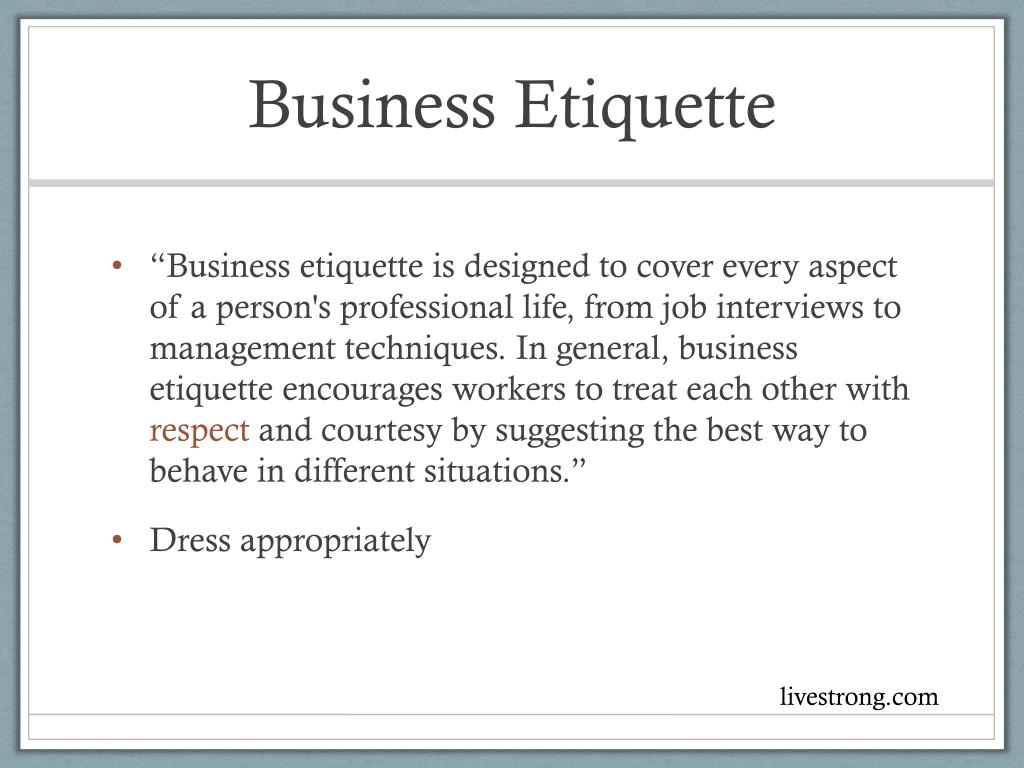A code of behavior including manners, etiquette, and rules of conduct is known as:
In the workplace, etiquette is indispensable for professional success. Displaying professionalism and courtesy towards colleagues, superiors, and clients can boost one’s career prospects https://miamilotushouse.com/the-specifics-of-casino-hotels/. Proper workplace etiquette, such as punctuality, effective communication, and respectful behavior, can significantly impact an individual’s advancement in their career.
By mid-20th century, however, concern about polite conduct was no longer confined to a social elite. Good manners for ordinary people in everyday situations were set forth in the United States by two prominent and influential arbiters of taste, Emily Post and Amy Vanderbilt. Drawing on her own wide experience in social, political, and diplomatic situations, no less a personage than Eleanor Roosevelt published her own typically practical Book of Common Sense Etiquette (1962).
Etiquette serves as a preventive measure against conflict. When people observe polite and respectful behavior, misunderstandings and disputes are less likely to arise. Whether in family gatherings, business negotiations, or public spaces, adhering to established etiquette norms can help prevent confrontations and promote a peaceful coexistence.
However, as soon as you leave your apartment, a neighbor with an angry face approaches you. Without even a greeting, they launch into a tirade about the poor maintenance of the building. Once you escape that conversation and head down the street, it feels as though you have entered a jungle: people in a rush, shouting loudly on their phones, gesturing wildly with their earphones in, bumping into each other with shoulders, handbags, and umbrellas, all without even noticing one another.

10 golden rules of email etiquette
Create distribution lists with rules: For recurring emails sent to large groups, I use email client tools to create pre-set distribution lists. This minimizes errors and ensures the right people are always included.
2) Know who’s receiving your message. Don’t “Reply All” if you don’t know who’s included, or you might be corresponding with someone you shouldn’t. We know of an e-mail invitation to a retirement party that included the company’s CEO. Everyone who responded chose to reply to all. After the 100th response cluttered his e-mail box, the CEO had the party’s sponsor fired. Which brings us to our next rule…
I’ve seen how a poorly phrased message can derail a project, but I’ve also watched a thoughtful, well-crafted email turn a tense situation around. As digital communication has taken center stage, especially with remote work and global teams, mastering the art of email etiquette has become a skill we can’t afford to overlook.

Create distribution lists with rules: For recurring emails sent to large groups, I use email client tools to create pre-set distribution lists. This minimizes errors and ensures the right people are always included.
2) Know who’s receiving your message. Don’t “Reply All” if you don’t know who’s included, or you might be corresponding with someone you shouldn’t. We know of an e-mail invitation to a retirement party that included the company’s CEO. Everyone who responded chose to reply to all. After the 100th response cluttered his e-mail box, the CEO had the party’s sponsor fired. Which brings us to our next rule…
What are the 7 rules of flag etiquette
On the US Military combat uniforms, where the flag is put on the sleeve of the uniform, the flag patch is displayed with the stars facing forward, in the direction the wearer is facing. This is done to give the impression of the flag flowing in the wind while being carried forward across the battlefield. This is known as the «Reverse Field Flag.»
(a) It is the universal custom to display the flag only from sunrise to sunset on buildings and on stationary flag staffs in the open. However, when a patriotic effect is desired, the flag may be displayed twenty-four hours a day if properly illuminated during the hours of darkness.
Perhaps the most important guideline involves how citizens should behave around the Stars and Stripes. For example, members of the armed services and veterans are asked to stand at attention and salute when their flag is passing in a parade or being hoisted or lowered; civilians should place their right hand over their hearts.
Any rule or custom pertaining to the display of the flag of the United States of America, set forth herein, may be altered, modified, or repealed, or additional rules with respect thereto may be prescribed, by the Commander in Chief of the Armed Forces of the United States, whenever he deems it to be appropriate or desirable; and any such alteration or additional rule shall be set forth in a proclamation.
